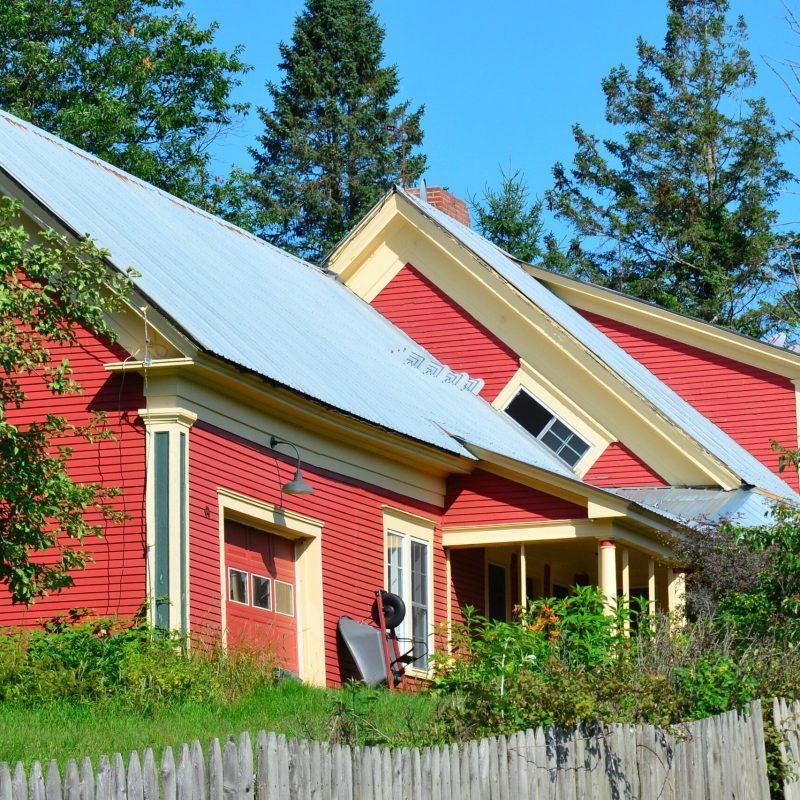
Some people call them Vermont windows after the state where they’re most commonly found. Others refer to them as sideways windows, lazy windows, or coffin windows. But their most common moniker, witch windows, is the best of all.
Videos by TravelAwaits
While it can be called many things, a witch window nearly always looks the same. It’s a rectangular, double-hung sash window at the gable-end wall of a house, tilted 45 degrees so its long end runs parallel to the roof slope.
When you see a witch window, you might just think that the person who installed it was a little tipsy at the time. In a world where windows are nearly always hung straight and parallel with the horizon, it’s disorienting to see one installed at an angle. Turns out that there’s a good explanation for them — as well as a number of really fun theories about why these windows exist in the first place!

Why Were They Built?
The most common explanation behind the witch window is that it was designed as a protection against witches. People believed that witches could not fly their broomsticks through tilted windows. While charming, this theory has a number of holes in it. For starters, homes typically only have one witch window — and many standard ones. While a witch’s attempt to enter a home might be thwarted by a tilted window, there’s nothing stopping one from entering through any of the other normal windows in the house. And, as Harry Potter fans can attest, not only can witches easily manipulate their flying to pass through any kind of opening, they’re also clever and inventive. No slanted window would deter them!
Of course, New England doesn’t have the best track record when it comes to understanding the nuances of witchcraft, so it’s entirely possible that people once sincerely believed a witch window offered them protection.
Another theory that’s along the spooky lines is that the windows are actually coffin windows. In olden days, when farmhouses had tight, narrow staircases. The argument goes something like this: It was much easier to remove a deceased family member’s body for burial by sliding the coffin through the tilted upstairs window than trying to maneuver it down the stairs.
Alas, it’s hard to say if it’s any easier to handle a coffin on a slanted roofline than it is to make your way down steep stairs with one. Moreover, during the days in which wakes were held in private homes, bodies would be carried downstairs to the coffin waiting in the parlor. A coffin itself would never go upstairs or leave through the window.
That leaves us with explanations that are much more pragmatic. In the 19th century, farmhouses often began quite small and expanded in size as families grew and farms prospered. There were many benefits to adding a small window to a second story extension, including ventilation and releasing hot air during the summer. However, there weren’t often many places to put them and chilly dormer windows were an unpopular choice.
That left homeowners with the small wall space at the gable end of the house. Given that custom-designed windows were both rare and expensive, selecting a standard rectangular window and installing it at an angle may have made for an odd look but it was a frugal, practical choice. If it doubled as a witch deterrent, that was all the better!

Where Can You Find Them?
Spotting a witch window is a really fun part of any Vermont road trip, but they are also found in rural areas of New Hampshire, Maine, and other parts of New England. If you’re keen on seeing them, the highest concentration of witch windows is in the rural areas of north-central Vermont that are speckled with 19th-century farmhouses.
I personally believe the best time to look for them is during the autumn — and not just because there may be more witches about in the lead-up to Halloween! Northern Vermont’s forest explodes with gorgeous color in October, providing the perfect backdrop for a little witch window hunting. Add in some fresh apple cider donuts and you have the ingredients for a perfect road trip.
New England bound? Plan a stay at one of these nine wonderfully quaint bed and breakfasts in New England.
